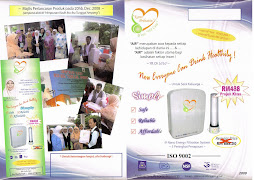Economic imbalance remains high in M'sia
Regional poverty remains a stumbling block in Malaysia's bid to become a high-income nation, despite the country's progress in bringing down poverty levels nationwide, says the World Bank.
Its Malaysia Economic Monitor April 2011 report said despite “vast improvements” in its socio-economic situation, the benefits did not spread out evenly with the bottom 40 percent of households accounting for only 14.3 percent of total income as at 2009.
Conversely, the top 20 percent of the population contributed nearly 50 percent of the total income calculated in that year.
“... in spite of notable reductions (in poverty) in the 1970s and 1980s, inequality remains at levels higher than Indonesia, Philippines and Thailand,” the report said.
Referring to an earlier edition of their report published in Nov 2010, the World Bank noted that income inequality “appears to have stagnated at internationally high levels” despite having knocked down the national poverty rate by 10 times, from an average headcount of 37.7 percent in 1976 to 3.8 percent in 2009.
The Nov 2010 report indicated that poverty in Malaysia retains “a strongly regional flavour”, with Sabah topping the list where nearly 20 percent of its population are living below the poverty line.
Middle income trap crippling
The figures also show that Sabah accounts for a whopping 42.9 percent of the country's total poor, followed by Sarawak with 12 percent and Kedah at 9.8 percent.
This was partly attributed to the recent global financial crisis, when poverty rates increased in Sabah, FT Labuan and Kedah, leading to a slight increase in national poverty rates in 2009 (3.8 percent) compared to 2007 (3.6 percent).
The World Bank's April 2011 report points to Malaysia's current situation – being stuck in a middle income trap – as a major factor behind its inability to increase its per capita gross national income.
“This has manifested itself in the growing inability to remain competitive as a high-volume, low-cost producer coupled with the difficulty to break into fast-growing markets for knowledge- and innovation-based products and services.
“The implication is that, despite past growth successes, living standards as measured by per-capita gross national income could have been significantly higher.
“In this respect, the comparison with South Korea is instructive: whereas four decades ago South Korea was markedly poorer than Malaysia, South Korea's per capita income is now three times higher than Malaysia.”
Going back to their Nov 2010 report, the World Bank recommended that the Malaysian government launch a three-pronged strategy to manage poverty, that includes boosting access to economic opportunities, improving human capital development and providing social protection to help those who cannot help themselves
Its Malaysia Economic Monitor April 2011 report said despite “vast improvements” in its socio-economic situation, the benefits did not spread out evenly with the bottom 40 percent of households accounting for only 14.3 percent of total income as at 2009.
Conversely, the top 20 percent of the population contributed nearly 50 percent of the total income calculated in that year.
“... in spite of notable reductions (in poverty) in the 1970s and 1980s, inequality remains at levels higher than Indonesia, Philippines and Thailand,” the report said.
Referring to an earlier edition of their report published in Nov 2010, the World Bank noted that income inequality “appears to have stagnated at internationally high levels” despite having knocked down the national poverty rate by 10 times, from an average headcount of 37.7 percent in 1976 to 3.8 percent in 2009.
The Nov 2010 report indicated that poverty in Malaysia retains “a strongly regional flavour”, with Sabah topping the list where nearly 20 percent of its population are living below the poverty line.
Middle income trap crippling
The figures also show that Sabah accounts for a whopping 42.9 percent of the country's total poor, followed by Sarawak with 12 percent and Kedah at 9.8 percent.
This was partly attributed to the recent global financial crisis, when poverty rates increased in Sabah, FT Labuan and Kedah, leading to a slight increase in national poverty rates in 2009 (3.8 percent) compared to 2007 (3.6 percent).
The World Bank's April 2011 report points to Malaysia's current situation – being stuck in a middle income trap – as a major factor behind its inability to increase its per capita gross national income.
“This has manifested itself in the growing inability to remain competitive as a high-volume, low-cost producer coupled with the difficulty to break into fast-growing markets for knowledge- and innovation-based products and services.
“The implication is that, despite past growth successes, living standards as measured by per-capita gross national income could have been significantly higher.
“In this respect, the comparison with South Korea is instructive: whereas four decades ago South Korea was markedly poorer than Malaysia, South Korea's per capita income is now three times higher than Malaysia.”
Going back to their Nov 2010 report, the World Bank recommended that the Malaysian government launch a three-pronged strategy to manage poverty, that includes boosting access to economic opportunities, improving human capital development and providing social protection to help those who cannot help themselves
Pusat Khidmat Wakil Rakyat Titiwangsa, No 10 Jalan Raja Muda Musa, Kg Baru, 50300 Kuala Lumpur. Tel: 0326980025 Fax: 0326980026 yb.drlolo@gmail.com twitter: docmarjan Fb: Yb Dr Lo'Lo'

















No comments:
Post a Comment